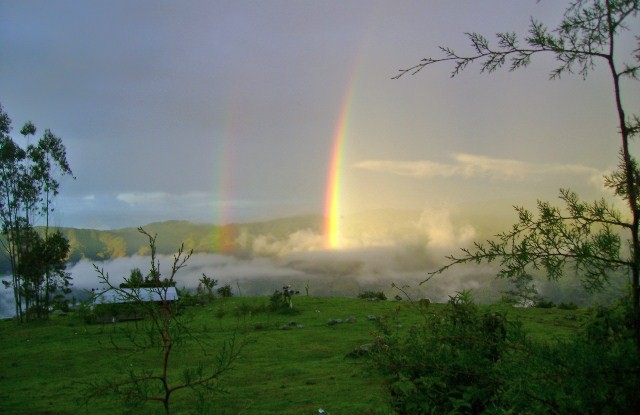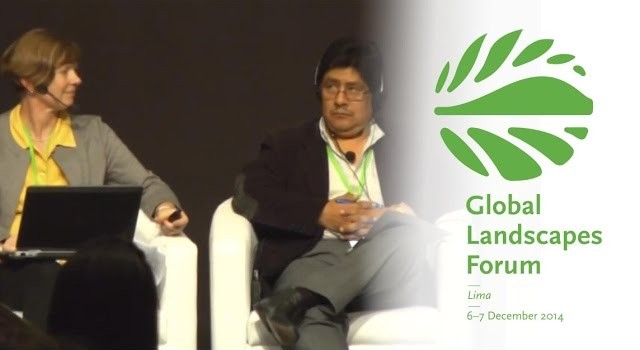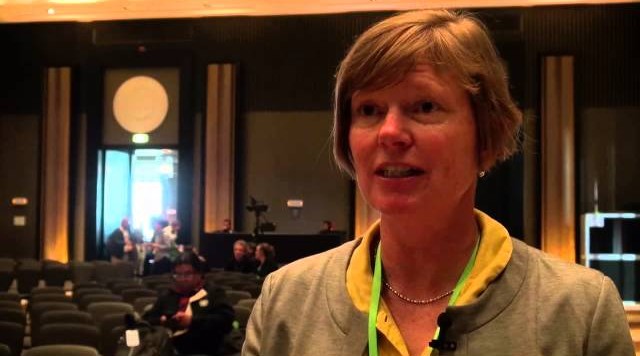LIMA, Peru—Despite no movement on the issue of REDD+ safeguards in discussions in Lima this month, experts on a panel at the Global Landscapes Forum on the sidelines of the UN climate conference (COP20) said progress on safeguards on the ground in some countries offers hope.
“It is an exciting time for REDD+ and for safeguards with all this experience coming out,” said Joanna Durbin, Director of the Climate, Community & Biodiversity Alliance (CCBA), which alongside CARE International serves as the secretariat of the REDD+ Social and Environmental Standards (SES) Initiative—and which organised the panel along with CIFOR.
“We’re in an initiative of exchange and learning between countries that is leading to new emerging good practices—and it really helps to emphasize how REDD+ can be part of a broader sustainable development strategy,” she said.
REDD+ safeguards are measures that mitigate potential social and environmental harms that could result from the implementation of REDD+, a voluntary mechanism that incentivizes developing countries for avoided deforestation.
“When REDD+ got going, lots of people were worried about how it would be implemented, and whether it would throw indigenous people off their land, or big private companies would come in, or that trees would be planted in monocultures,” Durbin said.
At COP16 in Cancun in 2010, a set of seven general safeguards was agreed upon, covering governance, rights, participation, consent, environmental and social-co-benefits, permanence and leakage.
“So [safeguards] are not only a kind of add-on, prerequisite checklist that you do, they’re an integral part of making REDD+ more effective, and making sure it delivers a whole suite of sustainable development objectives.”
SHOW ME THE WAY?
Last year, at COP19 in Warsaw, countries agreed that governments ‘should’ provide information every two years on how they’re complying with the Cancun safeguards to be eligible for results-based payments.
That measure of compliance is known as Safeguards Information Systems (SIS), which was approved at COP17 in Durban.
We need to have very clear rules and the first element of this is that the system has to have a compliance and enforcement mechanism
At the moment, countries largely develop their own systems—and discussions at this year’s COP in Lima centered on whether there should be more international guidance on what SIS summaries should contain.
This is what caused the sticking point in the negotiations.
“Many countries think that it would be very helpful to have more guidance because then they would know what they have to provide to the outside world, and donors and financing agencies would know what is good enough,” Durbin said.
“But there’s also a push back from some countries who are implementing REDD+ and don’t want to be told what to do.”
YOU CAN GO YOUR OWN WAY
In the meantime, she says, countries are innovating and developing their own Safeguards Information Systems. Learning from those experiences, along with looking ahead to the challenges and opportunities of operationalizing safeguards more broadly, was the focus of this GLF panel.
In Indonesia, for example, the government is testing an SIS REDD+ system at the provincial level in East Kalimantan.
Novia Widyaningtyas, Head of the Climate Change Division at Indonesia’s Ministry of Environment and Forestry, told the panel that donor countries can learn from East Kalimantan’s experience—and the process of developing SIS should be bottom-up.
“Global institutions and donors that have or are currently developing their own safeguards framework would benefit from aligning them with those developed by REDD+ countries to ease implementation,” she said.
But keeping the system operational is challenging, Widyaningtyas warned, and requires passion and resources—leaving countries like Indonesia hoping the investment in these systems will be rewarded by performance-based payments under REDD+ or a similar scheme.
Recent research looking specifically at Kalimantan by the Center for International Forestry Research (CIFOR) has found that there is potential to hold REDD+ Safeguards to standards as rigorous as those for carbon measurement, reporting and verification (MRV)—but as funding at national and subnational scales is likely to be very low, systems need to be low-cost, rigorous and sustainable.
INDIGENOUS: ‘OUR RIGHTS COME FIRST’
Indigenous representatives on the panel stressed their concerns and priorities for safeguards.
Cándido Mézua Salazar, Chairman of the National Coordinator of Indigenous Peoples of Panama, told the panel he sees safeguards as a way to protect the way of life of indigenous peoples.
“Full and effective engagement has to be given in all stages and processes of the any REDD+ program—if not then safeguards have no effect,” he said.
“We need to have very clear rules and the first element of this is that the system has to have a compliance and enforcement mechanism.”
“Our rights come first,” he said.
Toby Gardner, a Research Fellow at the Stockholm Environment Institute (SEI) said it’s crucial we get safeguards right.
“The language of ‘safeguard’ and ‘information’ just don’t do justice to the importance of the issues we’re talking about,” he said.
“We need to think hard about the most effective and realistic way of developing a participatory process that can liberate and give access to the kind of information that is a precondition to a process being effective, legitimate, and sustainable.”
And what’s most important, Durbin said, isn’t the approval of donor countries.
“It’s important that safeguards are implemented in a way that satisfies the stakeholders, the citizens of the country, who are affected by REDD+ or who can benefit from it,” she said.
“The arbiters of whether it’s good enough are the stakeholders in the country.”
We want you to share Forests News content, which is licensed under Creative Commons Attribution-NonCommercial-ShareAlike 4.0 International (CC BY-NC-SA 4.0). This means you are free to redistribute our material for non-commercial purposes. All we ask is that you give Forests News appropriate credit and link to the original Forests News content, indicate if changes were made, and distribute your contributions under the same Creative Commons license. You must notify Forests News if you repost, reprint or reuse our materials by contacting forestsnews@cifor-icraf.org.


